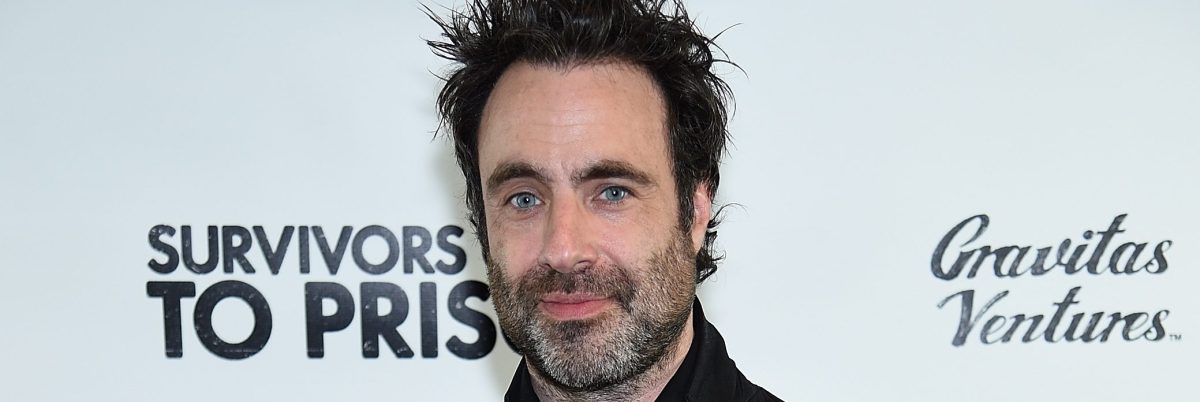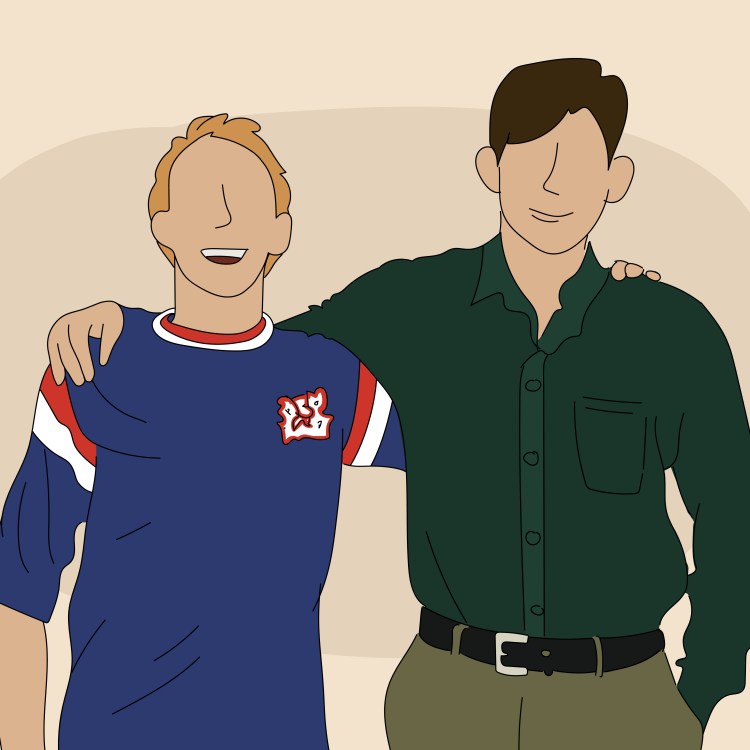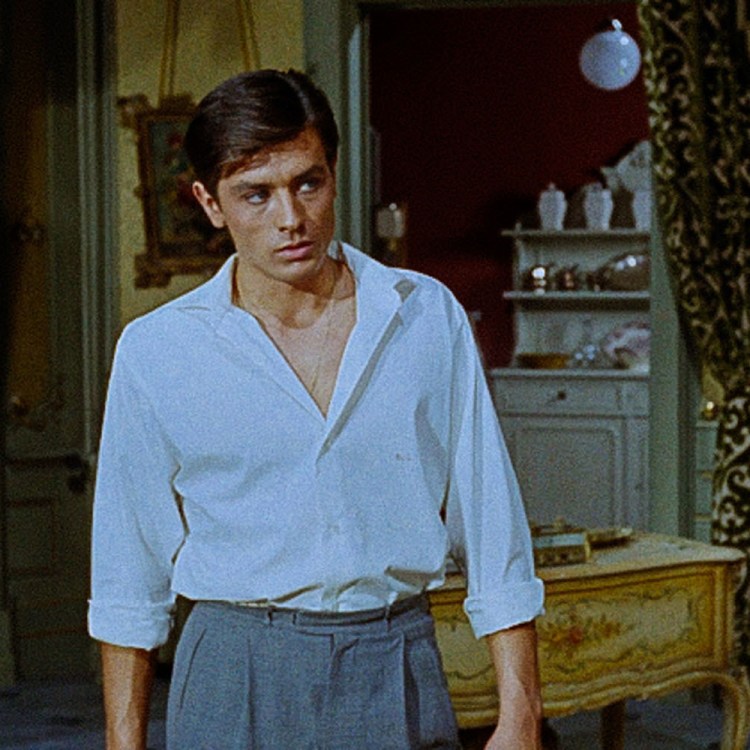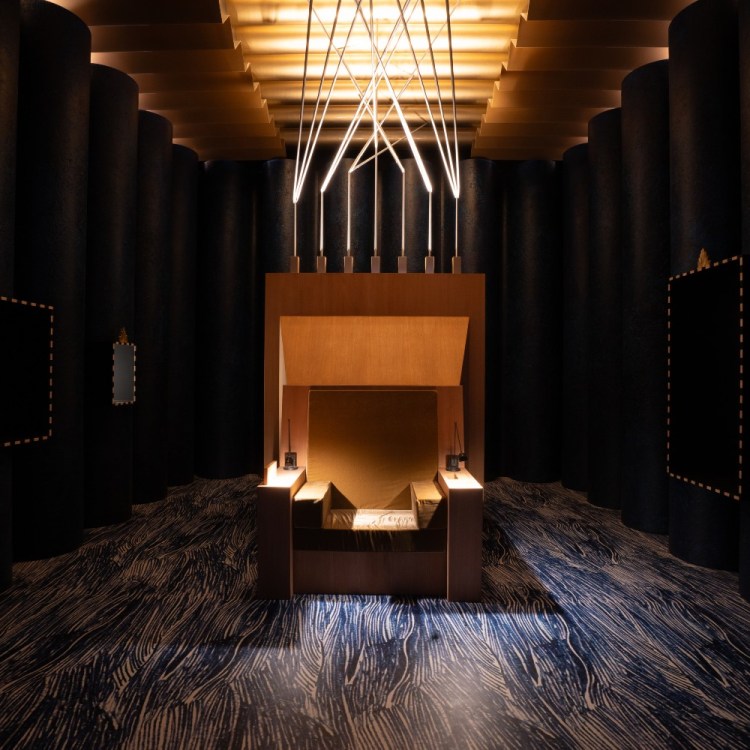Martin Luther King said “Injustice anywhere is a threat to justice everywhere,” and Survivors Guide to Prison is like a machine gun of facts and figures designed to disabuse the viewer of the notion that America is truly free.
“Welcome to the United States of America,” the weathered face of Danny Trejo intones to start the film announcing that we are home to the largest prison population in the world. Trejo joins a cavalcade of famous faces and voices appearing in the film to lend their support to this important issue and give a voice to those affected by it. The list of celebrities is long and they’re all impassioned. Susan Sarandon, RZA, Deepak Chopra, Patricia Arquette, Russell Simmons, George Lopez, Danny Glover, and Busta Rhymes among others share many details of why we have so many people imprisoned in this country.
The facts and figures come fast and furious: 13 million Americans arrested every year, one-third of the total women incarcerated in the world are in America, etc. The amount of evidence presented that we have a problem with the way we lock people up mounts and feels like a court trial. Be prepared to learn a lot about the way people with mental illness are treated by police, about how excessive our prison sentences are compared to other countries, and just how hard it is to survive prison.
Despite the fact that much of the film is focused on problems with the criminal justice system, there is quite a bit of information on how to survive prison and avoid it. Getting a good lawyer seemed to be the most important thing to remember, as the majority of people profiled in the film who were wrongfully convicted were tripped up by not having good ones.
Everyone involved seemed to have their own stories about the criminal justice system, including producer David Arquette who recalls how he was profiled in his wayward youth as a graffiti writer. “I noticed that if I dressed like a graffiti writer, I would get stopped by the police, but if I got dressed up nice and went out with my girlfriend, they tended to leave me alone.”
Arquette’s path to being involved with the film began when he went to San Quentin to teach an acting class in prison for the Sundance Channel and empathized with the inmates. One of them told him a story of how his stepfather threw his puppy against the wall and he realized the world was evil. It altered him and later he went to prison for murder.
“Things like that made me realize about how people are injured and where their pain is,” Arquette said. “We need to help them heal and provide them self-worth and jobs and opportunities instead of punishment.”
The human face of the tragedy is played out in various personal stories throughout the film of people who were wrongfully arrested and spent years in prison fighting to be free.
Jeffrey Deskovic, one of the producers, appears in the film to give his story of wrongful conviction and spoke in an interview with RCL about his experiences and about how he now fights to free wrongfully convicted prisoners.
“I spent 11 years in prison,” he told me, “because of a coerced confession gotten from the police through false promises, and despite a pretrial negative DNA test which showed that the DNA evidence on the victim didn’t match me.” His story echoes harsh realities in the film of how a defendant in America should be considered innocent until proven guilty but the system is stacked against them to prove it.
“Once the appeals were over, I was no longer provided with an attorney,” he said, “because they figure you’re not litigating anymore and don’t need a lawyer.” He spent 4 or 5 years writing letters to find a lawyer and an investigator willing to work for free who could find some new piece of evidence to bring him back to trial. He was finally exonerated by evidence from the DNA bank which not only released him, but identified the actual perpetrator.
Deskovic had completed an associate’s degree and a year of a bachelor’s degree while still in prison before funding was cut from the program. Lack of access to enrichment and rehabilitation programs is another big issue with prisons.
“What little programs there are in prison, there are never enough,” producer Steve DeVore adds. “There’s a huge waiting list to get into any classes, and some prisoners never have a chance because they’ll never get that far to the waiting list.”
The movie’s not entirely upsetting sobering thoughts and offers a lot of encouragement on how to help people trapped in the system by listening to them and investing time and resources to help. Three therapy programs shown at the end of the film, like a restorative justice workshop, produce powerful results in the incarcerated and the recidivism rate soars far above the average of released prisoners since as the film points out being in prison only teaches you to be a better prisoner.
Survivors Guide to Prison tackles a huge topic by giving bite-sized pieces of information to the audience and hopes that you do something with them.
“There’s so many layers and conversations that people can get involved with”, producer Christina Arquette (married to David) says, “It just depends on what you’re emotionally attached to. Hopefully, people watch the film, and want to start a conversation.”
RealClearLife also talked to director Matthew Cooke about the deeper themes behind the film.
Have you always wanted to work in film?
Matthew Cooke: I moved a lot as a kid and disappeared into movies and television shows like a lot of people in our generation. At 11 I saw Brazil by Terry Gilliam, and it was the first time I saw something broadcast where I thought “Wow somebody else out there thinks like me.” It was such a good feeling, and I was so comforted to feel that way, that I knew immediately, that’s what I wanted to do; I wanted to give that feeling to someone else. I wanted to make content so people wouldn’t feel alone. Eventually, that translated to the documentaries that I’m most passionate about where the topic and the characters speak to the audience and give them a voice.
Tell me about the conception of Survivors Guide to Prison.
MC: I love second person and instructional guides. As human beings, we invent something and act as if it’s as natural as the rising and setting of the sun. We terraform our planet with concrete and we drive around in vehicles and we act as if it’s totally natural. I guess it is to a certain extent, but it isn’t inevitable; it’s something we invent and I think it’s really funny and there’s a lot of absurdity to instructional guides.
I thought of Survivors Guide as a Trojan horse vehicle to create something that feels salacious and edgy and secretly delivers an army of information. When you let it into the city of your mind the soldiers of knowledge march out and take over.
There were so many aspects of prison that the film focused on, that some issues like women in prison and voting rights for felons only get touched on real briefly.
MC: Well prison is a huge issue, and these topics are just the tip of the iceberg. The film is fundamentally about conflict resolution about how we address harm. We gotta cooperate in order to function, and the objective of our cooperative communities is to have the most equitable society possible where everyone is achieving their potential and living happily, and the foundational element of all that is how you deal with conflict resolution. That’s what our criminal justice system is trying to deal with and if we do that in a barbaric ancient prehistoric manner then that kind of sensibility affects everything.
Late in the movie, Deepak Chopra says “The biggest prison is the invisible prison (of the mind).”
MC: That really sums up the whole thing doesn’t it? Prison is a way of thinking. The way to survive prison is by not having prison as the model. How you survive prison as an inmate is what the movie purports to be, but how do we survive prison as a concept as a society? Will we survive it by evolving our thinking about how to really prevent people from falling into crimes? These are the real objectives of a society when it comes to conflict resolution.
How do you think someone watching this movie in the atmosphere that we’re in today can avoid feeling futility?
MC: We know what works and it’s a matter of trying that stuff when we have the political will to support legislators in making a change. Getting people watching the movie adds to the culture shift. Prisons don’t work, so let’s get off this revenge tic – it’s old and it doesn’t serve us.
What do you think some of the best ways to get formerly incarcerated back in the loop of society?
MC: First of all we have to care. If we don’t care then we’re showing ourselves for who we are. To improve the 85% percent recidivism rate then we have to care what happens to people when they leave. When they get out they’re gonna need housing, and jobs, and something to eat, and training to help get them back into society. Once we’ve made that determination and recognized that reality, then why don’t we start doing that when they’re in prison?
There’s a part in the movie that talks about how we need to start thinking of prisoners as people and that a lot of us think a murderer is an occupation. It feels like a joke, but it cut to the way we think about people.
MC: When you were a kid did you ever take something that didn’t belong to you?
Sure.
MC: So are you a thief?
No.
MC: Killing somebody is one of the most horrendous things we can imagine, and sometimes people are involved in horrendous circumstances. We have to take a look at what happened and fix it. If something’s unfixable then let’s use that situation as an opportunity to raise up a community. If we just warehouse people and label them the damage that does to the family and the community outside is doubled. I think that we can be very empathetic towards a society that wants revenge when something bad happens and turns towards that lowest common denominator of our feelings. We shouldn’t let that feeling take over, it should just be fuel so we can take action and that action should be done with our higher selves.
Your film asks a lot of questions that it doesn’t necessarily provide answers for, things like prosecutorial immunity. What was your goal or intention for that?
MC: First of all we need to be aware of these things. There are lots of smarter systems in place. If I simply made a movie that was an hour and a half of alternative systems to the current one, then people might say, “But what’s wrong with our current system?” I don’t think most people have a notion of how bad it is. So my purpose is that I wanted to show all the areas that we are in serious trouble with our criminal justice system. Prosecutorial immunity is outrageous. They can essentially break the law to arrest somebody and that’s an easy fix. They shouldn’t be allowed to period.
There’s just so much to absorb in this movie.
MC: When you’re dealing with a film that’s about conflict resolution, it touches on every aspect of our lives as creatures that live in the constraints of time and space. If we want something or need something, we don’t just automatically have it; we have to take some action to get there. If I want to cross the road I’m gonna step on a lot of things along the way, and no matter what we do we’re always causing harm. We’re harm making machines. Whether we cause a little harm or a lot of harm depends on the situation, but no matter what, we’re always causing damage one way or another. Even if you’re a vegan and you just eat plants you’re disrupting the order of things, but that’s the nature of existence. How do we make that equitable as possible? How do we replenish what we take? How do we make sure that those in dominant positions aren’t abusing those positions and causing more harm? Creating awareness of this fundamental aspect of existence is important and it touches everything. So that’s why a film about what do we do when people cause harm, and how do we survive the process that we currently have; If it really is going answer that question it’s gonna touch on all these different aspects of life. It might not touch the metaphysical that I’m telling you right now, but if I just told you stuff that was already in the film that would be boring.
That restorative therapy scene was really powerful.
MC: It was an incredible experience. I locked eyes with one of the guys being filmed and we just had tears in our eyes and were shaking our heads like we couldn’t believe what was happening. It was testimony to how real substantive work in healing bridges many many gaps, and shows that there’s no difference between me, this guy in there filming, and the guy who was looking at me and shaking his head who had been prosecuted for a murder.
Survivors Guide to Prison is now playing in select theaters and available on VOD on Itunes and Amazon starting on February 23rd.
This article was featured in the InsideHook newsletter. Sign up now.
























